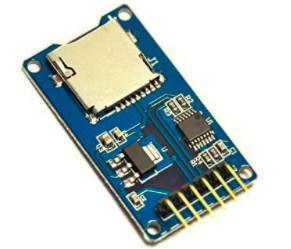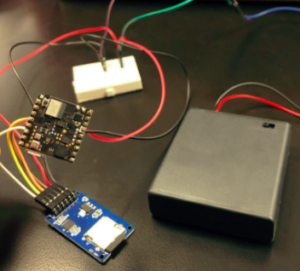Introduction
The main purpose of the sensor portion of the payload is to collect meaningful data that can be stored for later analysis. Atmospheric pressure, temperature, and humidity were initially chosen as the desired measurables. When observing the environment at altitudes as high as our target of 60,000 ft, the conditions can become rough and must be accounted for. Most importantly, the temperature drops as low as -40 C where some electronics lose their ability to operate. In order to account for this and the other design specifications detailed in table 2.1, hardware was found that had the ability to accurately measure in the conditions it would be implemented in. In addition to sensors, it was known that some sort of micro processing board would have to be used to process the data in real time onto a micro SD card at each sampling time. In turn a micro SD card and SD card shield would be implemented with the microcontroller for the actual data storage.
Hardware
The first piece of hardware chosen was the Arduino Nicla Sense ME. This board satisfies the needs for both the sensor and the microcontroller. It has the capability to measure all desired information as well as be programmed using the Arduino IDE to store the data onto a SD card. The board is shown below.

Arduino Nicla Sense ME
It is designed for various sensing capabilities and specifically contains the Bosch BME688 environmental sensor. This sensor is able to accurately measure atmospheric pressure, humidity, temperature, and air quality. In addition to combining multiple components into one, this arduino is also ideal for our HAB application due to its extraordinarily small size and weight. At only 23×23 mm and 2 grams it will be easily implemented onto the payload of the balloon.
The Arduino IDE allows the user to program the on chip microcontroller to sample the state of each sensor and a user defines rate, and also to store this data onto a SD card via a SD card shield shown below.

Micro SD Card Memory Shield
The shield has a voltage regulator and a level shifter to ensure that a safe voltage of 3.3 V is applied through the board so as to not damage the SD card. When the payload is retrieved all the flight data will be contained on the card saved as a text file. Text data requires a very small amount of memory for storage, but due to the inexpensiveness of SD cards a 32 MB card was chosen anyway.
Implementation
Once programmed using the code in appendix section C.1, the board was powered using a battery pack and wired to the SD card shield as shown below.

Wired Setup of Sensor System
When wired together the Arduino collects live sampled temperature, atmospheric pressure, and humidity levels at a rate of 1 sample/second. This data is then stored on the SD card as previously described for later analysis. Upon payload retrieval, data vs altitude graphs will be made in order to meaningfully display the collected measurements.
